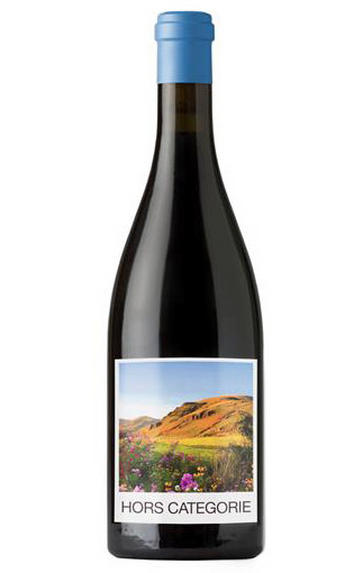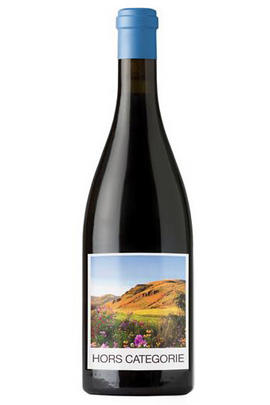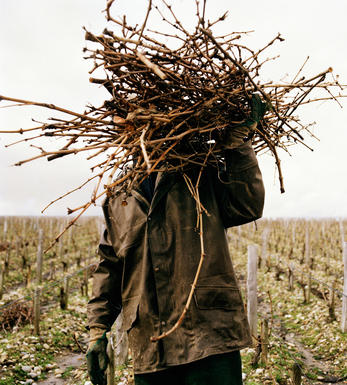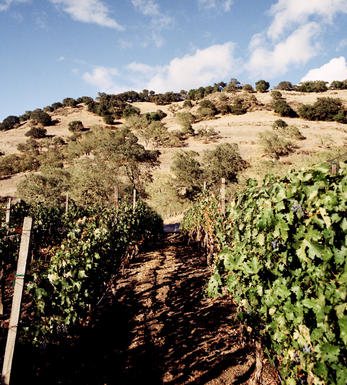
2014 Hors Categorie Syrah Christophe Baron De Cayuse

Critics reviews
The first vintage for this new vineyard (they made a 2013 but kept it all in magnum... if you get a bottle, call me), the inky-coloured 2014 Syrah is a huge, unctuous effort the exhibits crazy notes of Asian spice, soy, shiitake mushroom, blackcurrants and tar.
Tasking like a young Hermitage la Chappelle from Jaboulet (from a great vintage), with lots of tannins, blood, minerality and smoke, a huge mid-palate, and tons of tannin, it’s a tour de force in Syrah; I wish I could pour for every reader. Forget bottles for 4-5 years and drink over the following two decades or more.
Drink 2020 - 2040
Jeb Dunnuck, Wine Advocate (June 2017)
A wonderful new syrah from the owner of Cayuse. Rich and fresh aromas of dried meat, bacon fat, tea, and berries. Medium to full body, soft and round tannins and a flavorful finish. Tiny production.
Drink now
James Suckling, JamesSuckling.com (May 2018)
Just under 1ha of steep hillside vineyards planted on stakes and farmed biodynamically deliver fruit of exceptional ripeness for this bottling. This wine shows all the intensity and density of the house style but without the excess of some of the other bottlings.
There is great purity of fruit and a profoundly aromatic nose that ranges from cassis to blackberry and plum with notes of violets, roasted meat and fresh earth. The palate has more tension and snap than most.
Drink 2021 - 2041
Charles Curtis MW, Decanter.com (May 2021)
14.1% alcohol; made entirely with whole clusters and aged in neutral puncheons.
Impressive saturated ruby colour. The tight, brooding nose combines blackberry, liquorice, lavender, flint, black pepper and brown spices; I would have picked this blind as Hermitage, and a very good one at that.
The palate boasts exceptional fruit intensity and finesse, with lovely floral lift, but this strongly saline wine is wound tight in the early going despite showing some super-ripe notes. The palate-staining finish features serious but suave tannins and unflagging purple fruits. Utterly seamless, bulletproof fruit here.
This remarkable wine, representing a yield of under one ton per acre, comes from a 2.2-acre Syrah vineyard planted in 2011 (!) by owner Christophe Baron on a very steep slope in the foothills of the Blue Mountains. I predict this bottling will become one of the New World’s greatest and longest-lived Syrah bottlings as the vines mature.
Drink 2020 - 2030
Stephen Tanzer, Vinous.com (July 2017)
About this WINE

Hors Catégorie Vineyards
Located in Walla Walla Valley, Washington, USA, Hors Catégorie Vineyards was established in 2011 and is the first vineyard planted on the steep slope along the North Fork of the Walla River. Situated in the foothills of the Blue Mountains, this picturesque setting presents an extraordinary terroir characterized by a rare combination of climate, exposure, and topography, making it an incomparable wine-growing estate.
The vineyard primarily focuses on cultivating Syrah vines, which grow tenaciously on the hillside beneath ragged cliffs and are surrounded by rocky outcroppings. The challenging conditions force the vines’ roots to struggle for nourishment in the fractured basalt soil, contributing to the unique character of the wines produced here.
Wine Spectator Harvey Steiman visited the site for the first time in 2006 and was impressed by the expressiveness, power, and weightlessness of the American Syrah produced at Hors Catégorie. Tasting the wine straight from 600-litre Demi-muids, he noticed an open, almost weightless texture with mineral notes reminiscent of wet stones and hot bricks and hints of cinnamon, fresh-baked bread, and a field of flowers.
Steiman continued to be impressed by the wines in subsequent years, particularly after barrel-tasting the 2014 vintage. He reaffirmed that the combination of expressiveness, power, and weightlessness found in Hors Catégorie’s Syrah is a rare and remarkable quality not often seen in American Syrahs.

Walla Walla Valley
In the southeastern part of Washington State, USA, Walla Walla Valley is a prominent and acclaimed wine-producing region extending into northeastern Oregon. The valley’s viticultural roots date back to the mid-19th century, making it one of the oldest wine regions in the Pacific Northwest.
A semi-arid climate with hot summers and cold winters characterizes the region. It also benefits from the Cascade Mountain Range to the west, which shields the valley from excessive rainfall, creating an ideal environment for grape cultivation. The dry and sunny conditions contribute to the development of ripe and flavorful grapes, while cool nights help to preserve acidity, resulting in balanced and vibrant wines.
The valley’s diverse soils, primarily composed of loess (wind-blown silt) and well-draining basalt, create a patchwork of terroirs that add complexity and character to the wines. Additionally, ancient flood deposits contribute to the valley’s fertile landscape, further supporting grapevine growth.
Walla Walla Valley is renowned for its red wines, particularly Cabernet Sauvignon, Merlot, and Syrah, which thrive in the region’s climate and soils. These red varieties are known for their rich fruit flavors, supple tannins, and aging potential. Excellent white wines, such as Chardonnay and Riesling, are also produced, which benefit from the valley’s diurnal temperature variation and well-drained soils.
The wine is characterized by a strong sense of community and collaboration among winemakers, fostering a culture of quality and innovation. Many wineries in the region are small, family-owned operations dedicated to handcrafted and sustainable winemaking practices.

Grenache/Garnacha
Grenache (Noir) is widely grown and comes in a variety of styles. Believed to originate in Spain, it was, in the late 20th century, the most widely planted black grape variety in the world. Today it hovers around seventh in the pecking order. It tends to produce very fruity, rich wines that can range quite widely in their level of tannin.
In many regions – most famously the Southern Rhône, where it complements Syrah and Mourvèdre, among other grapes – it adds backbone and colour to blends, but some of the most notable Châteauneuf du Pape producers (such as Château Rayas) make 100 percent Grenache wines. The grape is a component in many wines of the Languedoc (where you’ll also find its lighter-coloured forms, Grenache Gris and Blanc) and is responsible for much southern French rosé – taking the lead in most Provence styles.
Found all over Spain as Garnacha Tinta (spelt Garnaxa in Catalonia), the grape variety is increasingly detailed on wine labels there. Along with Tempranillo, it forms the majority of the blend for Rioja’s reds and has been adopted widely in Navarra, where it produces lighter styles of red and rosado (rosé). It can also be found operating under a pseudonym, Cannonau, in Sardinia.
Beyond Europe, Grenache is widely planted in California and Australia, largely thanks to its ability to operate in high temperatures and without much water. Particularly in the Barossa Valley, there are some extraordinary dry-farmed bush vines, some of which are centuries old and produce wines of startling intensity.


Buying options
Add to wishlist
Description
The first vintage for this new vineyard (they made a 2013 but kept it all in magnum... if you get a bottle, call me), the inky-coloured 2014 Syrah is a huge, unctuous effort the exhibits crazy notes of Asian spice, soy, shiitake mushroom, blackcurrants and tar.
Tasking like a young Hermitage la Chappelle from Jaboulet (from a great vintage), with lots of tannins, blood, minerality and smoke, a huge mid-palate, and tons of tannin, it’s a tour de force in Syrah; I wish I could pour for every reader. Forget bottles for 4-5 years and drink over the following two decades or more.
Drink 2020 - 2040
Jeb Dunnuck, Wine Advocate (June 2017)
wine at a glance
Delivery and quality guarantee